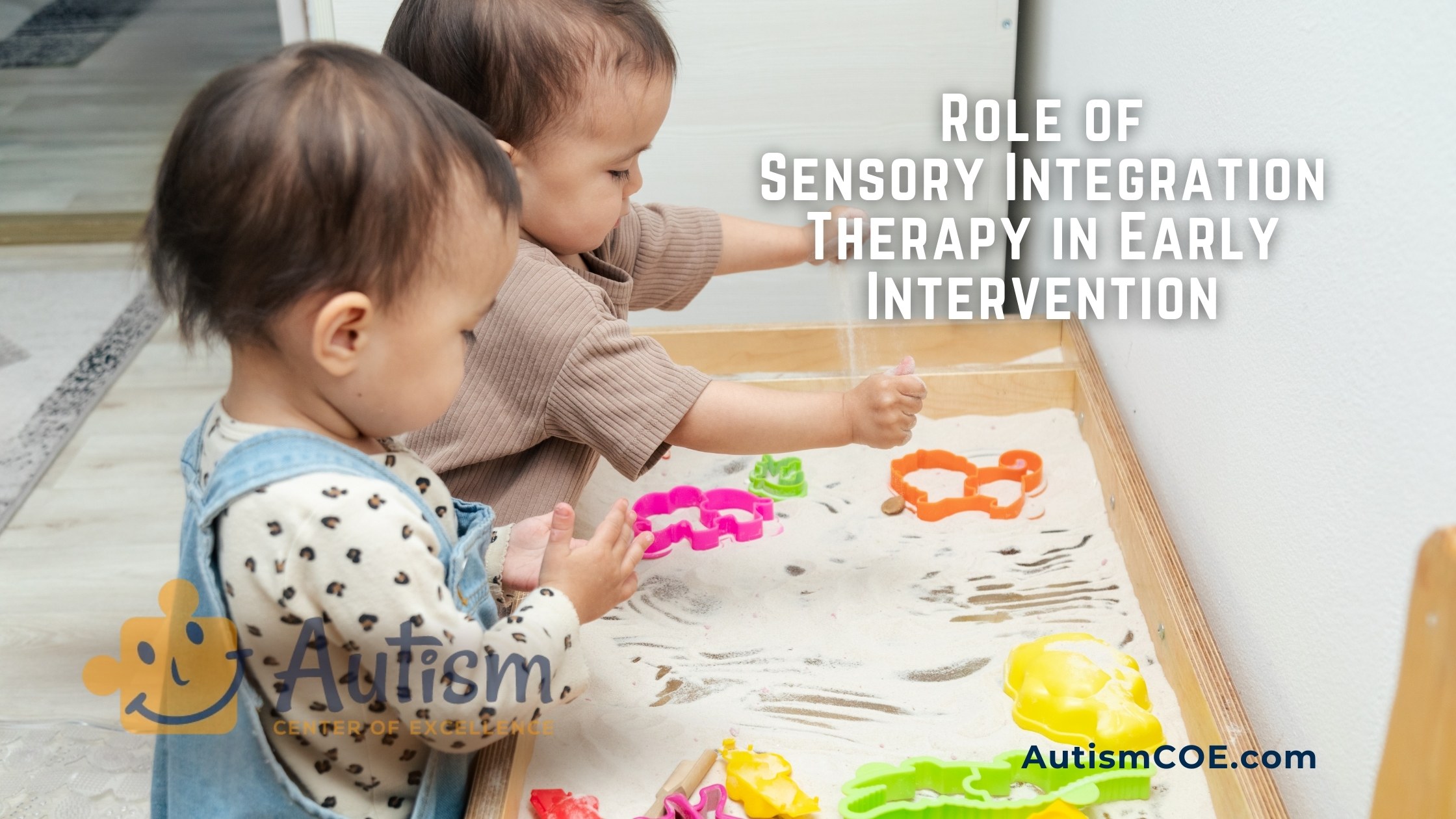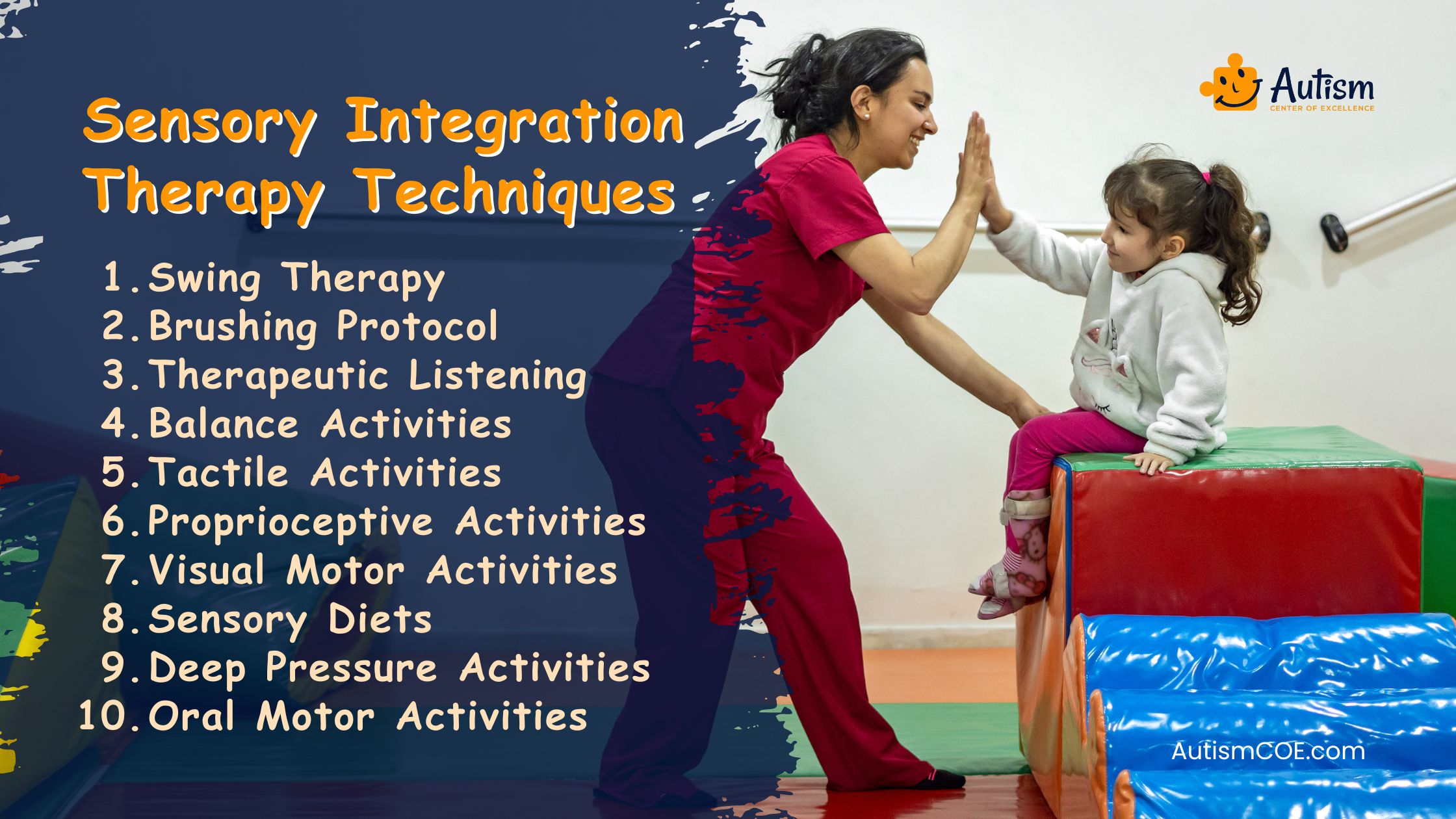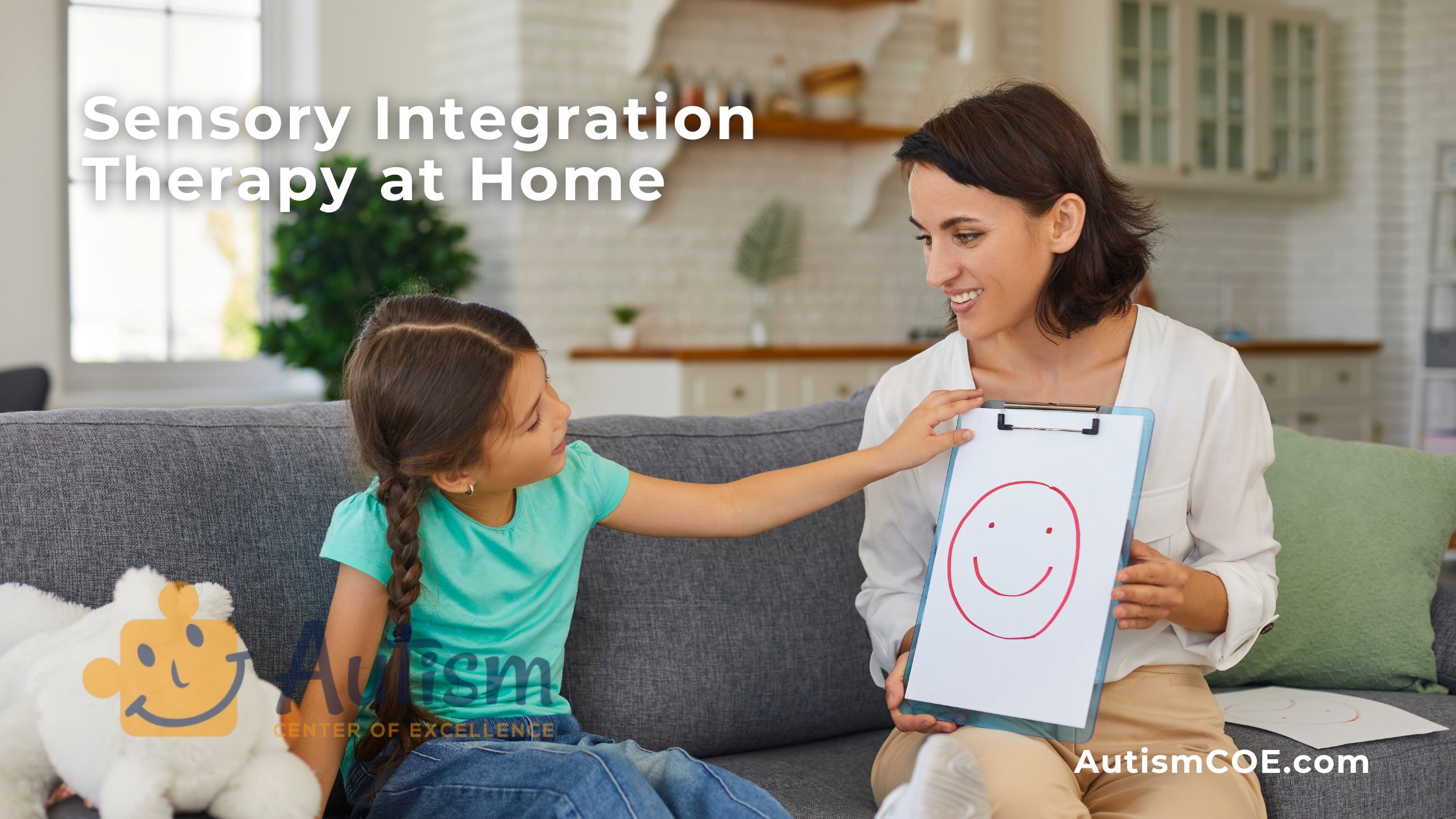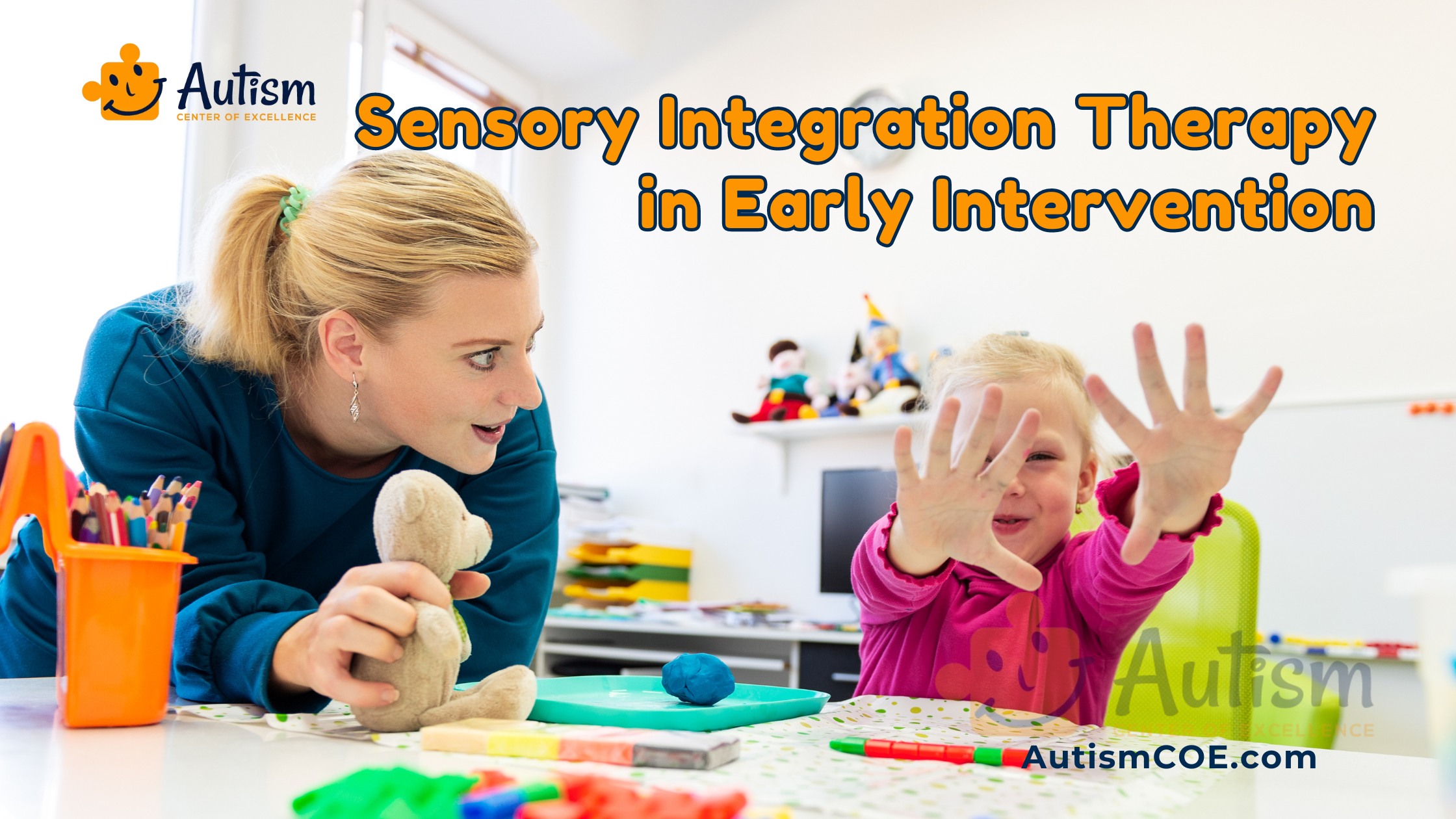The world is a difficult thing to understand. The human brain has to handle a continuous flow of sensory information, to separate the unneeded noise and concentrate on what is essential. However, some of the children do not go through this process smoothly. Here the aspect of sensory integration is introduced. Sensory integration is the process of the brain to interpret and coordinate such information coming from our sensory organs. But when this process is blocked it may lead to a sensory integration disorder, which is a condition that can adversely affect a child’s development and daily activities.
In this blog, we explore the world of sensory integration therapy, an Early Intervention approach, which is fast becoming one of the most effective methods of treatment for sensory processing disorders, including those in children with autism. Then, if you are a parent seeking solutions or a professional who needs other views, this comprehensive sensory integration therapy guide in early intervention will probably provide the answers for you.
What is Sensory Integration Therapy for Autism?
Sensory Integration Therapy is an intervention that is customized to help children who have sensory processing disorders. It is intended to assist them in processing sensory stimuli in terms of touch, sound, and motion among others in a more efficient manner. This type of activity can be highly effective for children with autism who struggle with these types of sensory inputs.
Sensory Integration Disorder or Sensory Processing Disorder is common in children with Autism Spectrum Disorder (ASD). This state, they say, complicates the way they perceive sensory input from their surroundings. For example, they may be hyper-sensitive to how some fabrics feel, certain sounds, too loud or not even perceive them or, they may have some problem with motions that other people perform fluidly like climbing the stairs.
👉 Read More about – Sensory Processing Disorder
How Does Sensory Integration Therapy Work?
Sensory Integration Therapy operates by organizing particular activities that teach children suffering from sensory processing disorders to react to sensory input in an appropriate manner. This therapy is based upon the idea that the correct sensory providence can develop the brain and the way that the brain perceives the sensory information. It is usually provided by an Occupational Therapist who has achieved specialty qualifications in sensory integration theory and techniques.
During a usual session, the therapist can employ a range of therapeutic activities that are aimed to provide the child with some sensory input in an organized, controlled manner. Such may involve swings, spins, balance exercises, tactile play with different textures, or listening to various sounds. The trick is to run these activities as enjoyable games that stimulate the child to take part. With time, by being exposed to the stimuli repeatedly and through rehearsal, a child can develop an efficient method of processing sensory inputs, thus, reducing symptoms of sensory overload and enabling the child to connect better to his environment.

Role of Sensory Integration Therapy in Early Intervention
Early intervention in the Management of ASD is very important and Sensory Integration Therapy (SIT) has been identified as a useful approach for enhancing the overall functioning and development of young children.
🎯 Improves Sensory Modulation
Sensory Integration Therapy (SIT) is beneficial to children with autism because it helps them to develop their ability to process sensory stimuli accurately. This results in improved behavior and attention span as the child is no longer overpowered by the stimuli.
🎯 Enhances Social Interactions
SIT helps children to manage sensory over responsibility and thereby it could enhance their social skills. They become at ease in social situations where they tend to develop better interactions with people of their age and adults.
🎯 Boosts Academic Skills
On the bright side, children with autism tend to improve their ability to process sensory input, and, therefore, they find it easier to concentrate at school. This can be followed by the student enjoying good grades.
🎯 Promotes Personal Development
In addition to sensory processing, SIT also enhances the development of motor skills, coordination, and balance. A child needs these skills for development as well.
🎯 Provides Structured Learning
Occupational therapists use activities that are repetitive and structured, so children are exposed to various sensory stimuli. Such a systematic technique will allow the children to get used to various sensory experiences.
🎯 Reduces Anxiety and Distress
Too much sensory input can be overwhelming for children with autism. SIT will be able to teach them how to control this overload so as to lessen anxiety in the children and make them more comfortable with their environment.
🎯 Fosters Independence
As children learn to better process sensory information, they may become more confident and independent. They can participate more fully in daily activities, from dressing themselves to participating in group Activities at School.
🎯 Supports Early Intervention Goals
SIT fits the goals of Early Intervention for Children with Autism. It provides a child-focused, Play-Based Approach to counseling that can reinforce other components of early intervention, like Speech Therapy or behavior therapy.
Join Our Weekly Newsletters!
Subscribe now to stay updated with our latest email updates.

Sensory Integration Therapy Techniques and Approaches
Sensory Integration Therapy techniques and approaches that are frequently employed in the early intervention for children with ASD. These approaches seek to enhance a child’s perceptual and response systems.
Swing Therapy
This method employs a variety of swings to trigger the vestibular system that enhances balance and spatial orientation. Other movements and activities may also be added by the therapist when the child is on the swing to promote sensory integration.
Brushing Protocol
Wilbarger Protocol which is also referred to as Brushing Protocol requires that deep-pressure touch stimulation is applied with a brush. It assists in decreasing touch sensitivity and body sense perception.
Therapeutic Listening
This approach includes listening to music composed specifically to improve auditory processing abilities. It can also enhance attention, self-regulation, and general behavior.
Balance Activities
A child’s balance and coordination can be improved using balance boards, trampolines, or obstacle courses. Such activities can also assist in coordination and proprioception.
Tactile Activities
This includes playing with sand, water, play-doh, or other texturized materials. Engaging in these exercises can aid in minimizing sensory defensiveness and in enhancing fine motor skills.
Proprioceptive Activities
These are works that are about work that is heavy or with resistance like pushing, pulling, lifting, or carrying objects. They can facilitate in enhancing body sense and balance.
Visual Motor Activities
Such activities develop hand-eye coordination and visual processing abilities. They could include activities such as ballgames, puzzles, or a drawing challenge.
Sensory Diets
All day long, personalized activities ensure whatever sensory input that child needs is included. This may comprise particular actions, tactile tasks, or oral motor drills.
Deep Pressure Activities
These might include getting into tight spaces, wearing weight vests, or using weighted blankets. It can aid children in feeling more stable and developing body awareness.
Oral Motor Activities
Chewing, bubble-blowing, and straw-drinking activities are used to develop oral motor skills and minimize oral sensitivities.
Collaborating ABA with Sensory Integration Therapy
Applied Behavior Analysis (ABA) and Sensory Integration Therapy (SIT) in combination present an integral intervention for children with Autism Spectrum Disorder (ASD). ABA, an evidence-based therapy for ASD recognized worldwide, targets the improvement of specific behaviors, for example, social skills, Communication, and academics, and minimizing problematic behaviors. In contrast, SIT is targeted to assist children with ASD in both processing and responding to sensory information from the environment. Used in combination, these treatments can help children with ASD to deal with both behavioral and sensory issues.
In this collaborative model, therapists may blend sensory techniques with ABA programming to develop a comprehensive intervention program. In this case, a child can perform SIT activity to modulate their sensory system and then engage in an ABA learning task. This may improve their concentration and reduce disruptive behaviors and hence, the process of learning will become more efficient. Moreover, ABA Techniques can be utilized to strengthen the ARM activities, thereby increasing the advantages of both therapies. Utilization of such an integrated approach results in better overall functioning and quality of life for children with ASD.

How to Give Sensory Integration Therapy at Home?
In the clinical setting, SIT is frequently conducted by occupational therapists; however, some methods are available for parents and caregivers to utilize sensory integration techniques at home. Such activities are helpful in enhancing sensory development.
🏠 Create a Sensory-Friendly Environment: Ensure that your home setting is sensory integration-friendly. That could involve reducing loud sounds, providing a wide range of textures for tactile play, and setting up a quiet, soothing area for chilling out.
🏠 Incorporate Sensory Activities into Daily Routines: This would include the addition of kinesthetic activities, such as playing with sand or dough during playtime and using a heavy blanket for relaxing before bedtime.
🏠 Use Sensory Tools: For example, therapy balls, swings, trampolines, and fidget toys could assist. Start with such tools little by little and encourage your child to investigate how they can be used safely and usefully.
🏠 Follow a Sensory Diet: A sensory diet gives a child the sensory input that is particular to that child. It may involve particular movements, tactile activities, or oral-motor exercises.
🏠 Seek Professional Guidance: Home does a lot of good to you, but it is crucial to work with the Occupational Therapist or any other professional that will help you in delivering efficient sensory integration therapy.
Frequently Asked Questions & Answer
Does Early Intervention Help Sensory Issues?
Yes, timely intervention can greatly aid sensory difficulties. Sensory issues will be diagnosed early and resolved earlier, which will allow the child to develop effective techniques to deal with the problem. Such programs need to include sensory integration therapy which would help kids to develop the ability to process sensory information and accordingly respond to sensory triggers, thereby, improving their functionality and their quality of life.
Who Needs Sensory Integration Therapy?
Sensory Integration Therapy is an autism treatment approach mostly developed for children who have sensory processing disorders, such as those with Autism Spectrum Disorder (ASD), Attention Deficit Hyperactivity Disorder (ADHD), and other Developmental Delays. Such children may suffer from sensory processing disorder which is the inability of the child to process and integrate sensory information from the environment, and this affects their motor skills, behavior, learning, and daily living.
What are the Symptoms of Sensory Integration Disorder?
Symptoms of Sensory Integration Disorder, also known as Sensory Processing Disorder, can vary widely but may include:
- Overly sensitive to touch, movement, sights, or sounds.
- Easily distracted in a sensory-rich environment.
- Difficulty performing fine motor tasks like writing or buttoning clothes.
- Uncoordinated movements and poor balance.
- Extreme response to changes in routine or environment.
- Difficulty engaging in play or conversation with peers.
- Difficulty calming oneself after excitement or distress.
- Unusually high or low activity level.
- Problems with self-regulation, including sleep, feeding, and mood.
- Delays in speech, motor skills, or academic achievement.
What are the Benefits of Sensory Integration Therapy?
Sensory Integration Therapy can offer several benefits:
- Improved Sensory Processing
- Enhanced Motor Skills
- Better Social Interaction
- Increased Focus
- Reduced Anxiety
- Improved Self-Esteem
- Enhanced Quality of Life
Conclusion
The final objective of Sensory Integration Therapy is to allow children with autism to engage in all of the activities placed in their lives. Through learning to control sensory inputs, they can have more harmonious relationships with their surroundings and other people. This can result in better Social Interactions, learning, and quality things of life. The Autism Center of Excellence is devoted to custom Early Intervention Programs, giving priority to individual needs, especially in conducting tailored sensory integration therapy for children with autism, appreciating their uniqueness.
Please Note: The content of this blog is for informational purposes only and should not be considered a substitute for professional medical advice, diagnosis, or treatment. Consult a qualified healthcare professional for personalized guidance tailored to your specific situation.

Bhavika Bhasin
Bhavika Bhasin is the Research and Marketing officer at AutismCOE. She works with children and adults with ASD. Her clinical research includes evaluating various available autism screening and diagnosis methods and their efficacy. She is currently developing a novel screening exam that is indicated to be more accurate than the existing available exams. She is also writes articles papers for various publications.


